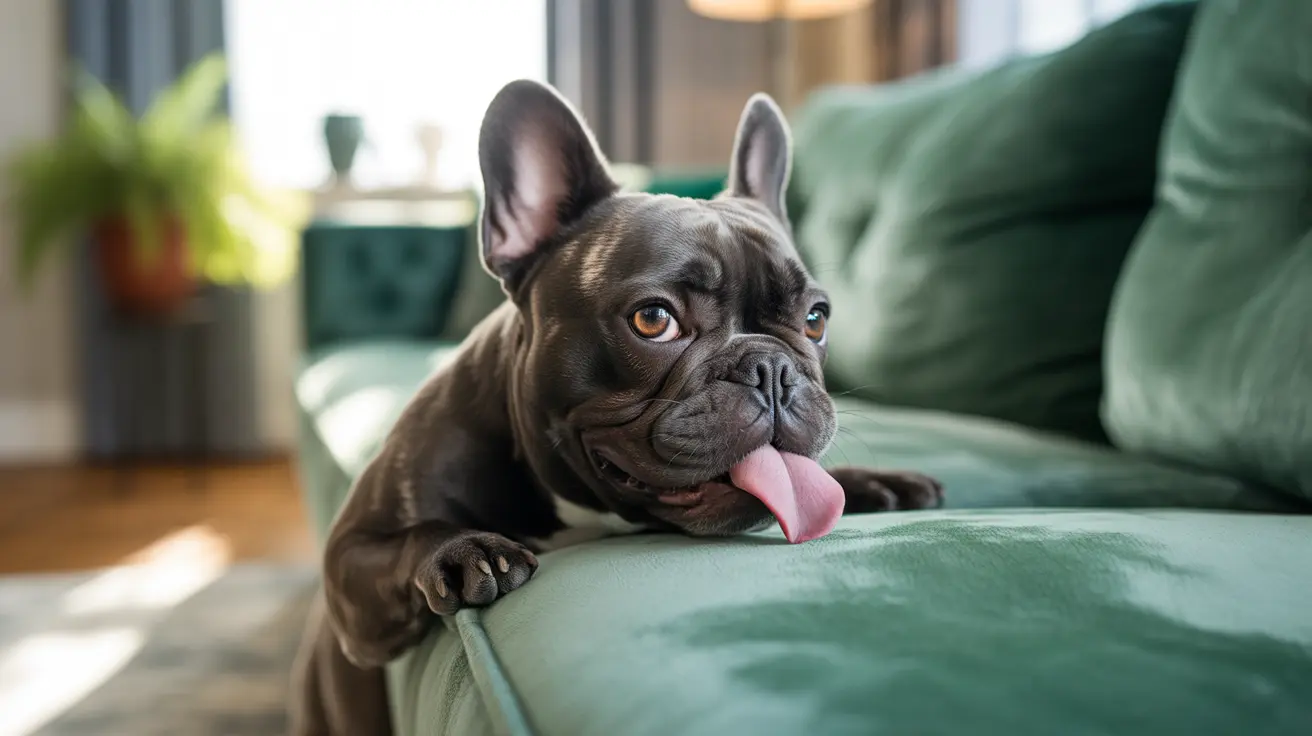Normal vs. Concerning Couch-Licking Behaviors
Dogs naturally explore their environment through their mouths and tongues, but it's essential to distinguish between normal investigative behavior and problematic licking patterns. Occasional couch licking might be perfectly normal, while excessive or compulsive licking could indicate underlying issues that need addressing.
Natural Exploratory Behavior
Puppies and young dogs often lick furniture as part of their sensory exploration. This behavior typically decreases as they become familiar with their environment. The texture, smell, and taste of your couch can be particularly interesting to dogs, especially if there are traces of food, sweat, or other attractive scents.
Signs of Problematic Licking
When couch licking becomes excessive, repetitive, or difficult to interrupt, it may indicate a more serious issue. Watch for signs such as:
- Licking for extended periods
- Showing anxiety when prevented from licking
- Damaging the furniture through constant moisture
- Accompanying behavioral changes
Common Causes of Couch Licking
Stress and Anxiety
Many dogs turn to licking as a self-soothing mechanism when feeling anxious or stressed. This behavior releases endorphins, creating a calming effect similar to how humans might bite their nails when nervous. Changes in routine, separation anxiety, or environmental stressors can trigger this behavior.
Boredom and Lack of Stimulation
Dogs need both physical exercise and mental stimulation to stay healthy and happy. Without adequate activity, they may develop repetitive behaviors like couch licking to pass the time and create their own entertainment.
Medical Conditions
Sometimes, excessive licking can indicate underlying health issues such as:
- Gastrointestinal problems
- Nutritional deficiencies
- Obsessive-compulsive disorder
- Cognitive dysfunction in senior dogs
Effective Solutions and Prevention Strategies
Environmental Enrichment
Provide your dog with plenty of physical exercise and mental stimulation through:
- Regular walks and playtime
- Interactive puzzle toys
- Training sessions
- Designated chew toys
Behavioral Modification
Address the behavior through positive reinforcement and consistent training:
- Redirect your dog to appropriate activities
- Reward calm, non-licking behavior
- Establish a regular daily routine
- Consider professional training if needed
When to Consult a Professional
If your dog's couch licking persists despite your best efforts at prevention and management, it's time to seek professional help. Consult your veterinarian to rule out medical causes, or work with a certified animal behaviorist for persistent behavioral issues.
Frequently Asked Questions
Why does my dog lick the couch even when it looks clean?
Dogs have a much more sensitive sense of smell than humans and can detect residual scents, oils, and salts that we can't see. Even a seemingly clean couch may contain attractive traces of food, sweat, or other interesting scents.
Can excessive couch licking be a sign of stress or anxiety in my dog?
Yes, excessive licking can be a self-soothing behavior that dogs use to cope with stress or anxiety. If the behavior seems compulsive or is accompanied by other signs of stress, consult with a veterinarian or animal behaviorist.
How can I stop my dog from licking the couch out of boredom or attention-seeking?
Increase physical exercise and mental stimulation through regular walks, playtime, and puzzle toys. Ignore attention-seeking behavior and reward appropriate alternatives. Maintain a consistent daily routine to prevent boredom.
Could my dog's couch licking indicate a medical problem like compulsive behavior or allergies?
Yes, persistent licking could signal various medical issues, including compulsive disorders, allergies, or gastrointestinal problems. If the behavior is excessive or accompanied by other symptoms, consult your veterinarian for an evaluation.
What are safe and effective ways to prevent my dog from damaging the couch by licking?
Use pet-safe deterrent sprays, provide appropriate chew toys, and maintain regular cleaning of your couch with pet-safe products. Consider using protective covers and implementing consistent training to redirect the behavior to more appropriate outlets.






